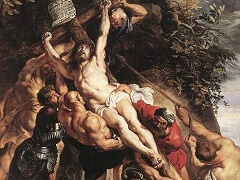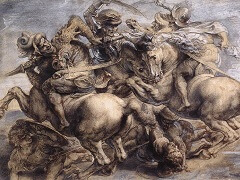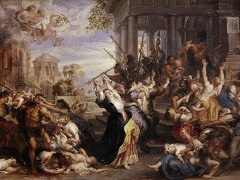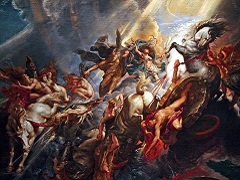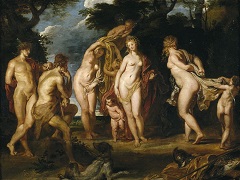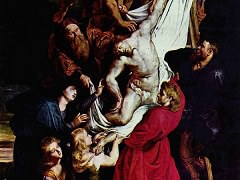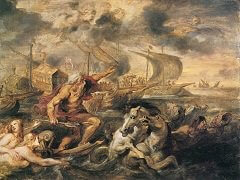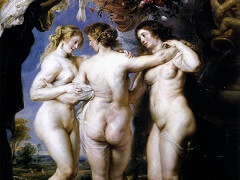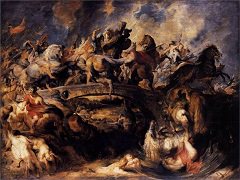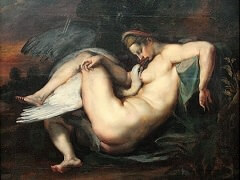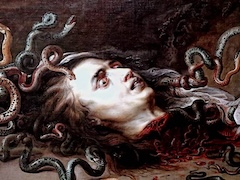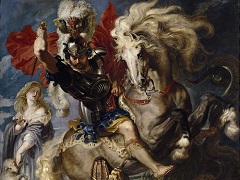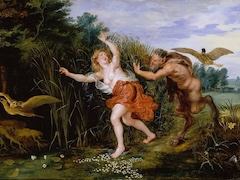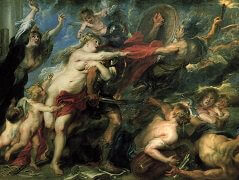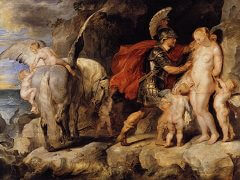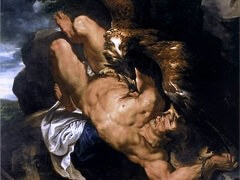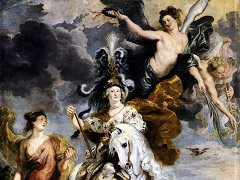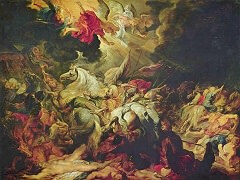Samson and Delilah, 1610 by Peter Paul Rubens
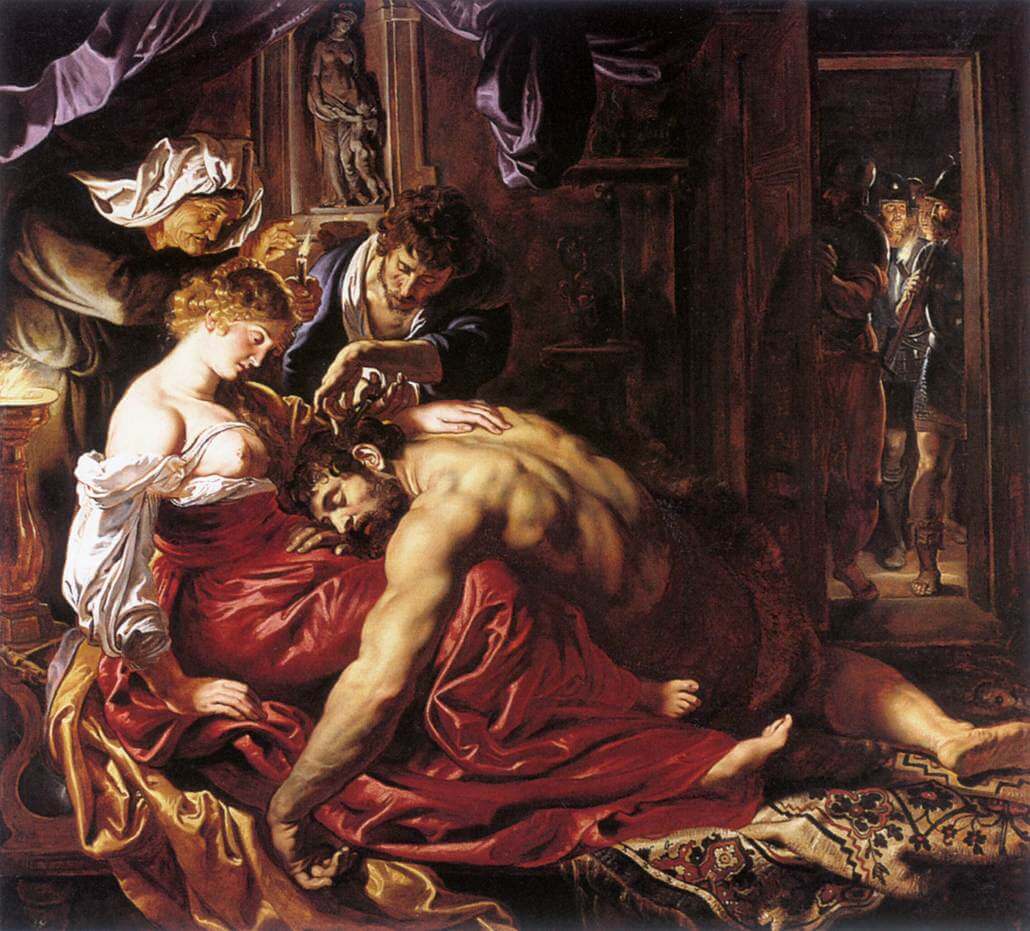
The story of Samson's fatal passion for Delilah is told in the Old Testament (Judges 16:4-6, 16-21). Bribed by his Philistine enemies, she cozens Samson into revealing the source of his supernatural strength: his uncut hair. As he lies asleep in her lap during a night of love, she calls in a barber to cut off `the seven locks of his head'. The tale of a man brought low by lust for a woman was often treated in sixteenth-century Netherlandish art, and Rubens follows this Northern tradition by introducing a procuress, who does not appear in the Bible. Her profile juxtaposed with that of the youthful harlot both reveals her own past and suggests Delilah's future. At the same time, the painting is rich in Italian memories, not least in the ample scale of its life-size foreground figures, accommodated on the panel only by being shown reclining. A statue of Venus and Cupid presides over the erotic scene. Brawny Samson derives from antique sculpture and from Michelangelo; Delilah's pose is that of Michelangelo's Leda and Night in reverse. In Delilah's breast band Rubens draws on Roman marbles, but following his own maxim translates marble into soft and yielding flesh - some of the fleshiest ever painted.
Ultimately, however, this sumptuous picture is entirely original, and nowhere is this more apparent than in the incongruously dainty professional gesture of the barber and in Delilah's ambiguous expression, compounded of sensuality, triumph and pity.
This painting was commissioned by Nicolaas Rockox, alderman of Antwerp, for his town house in 1609-10. It shows the influence of the antique, as well as Leonardo da Vinci and Caravaggio

